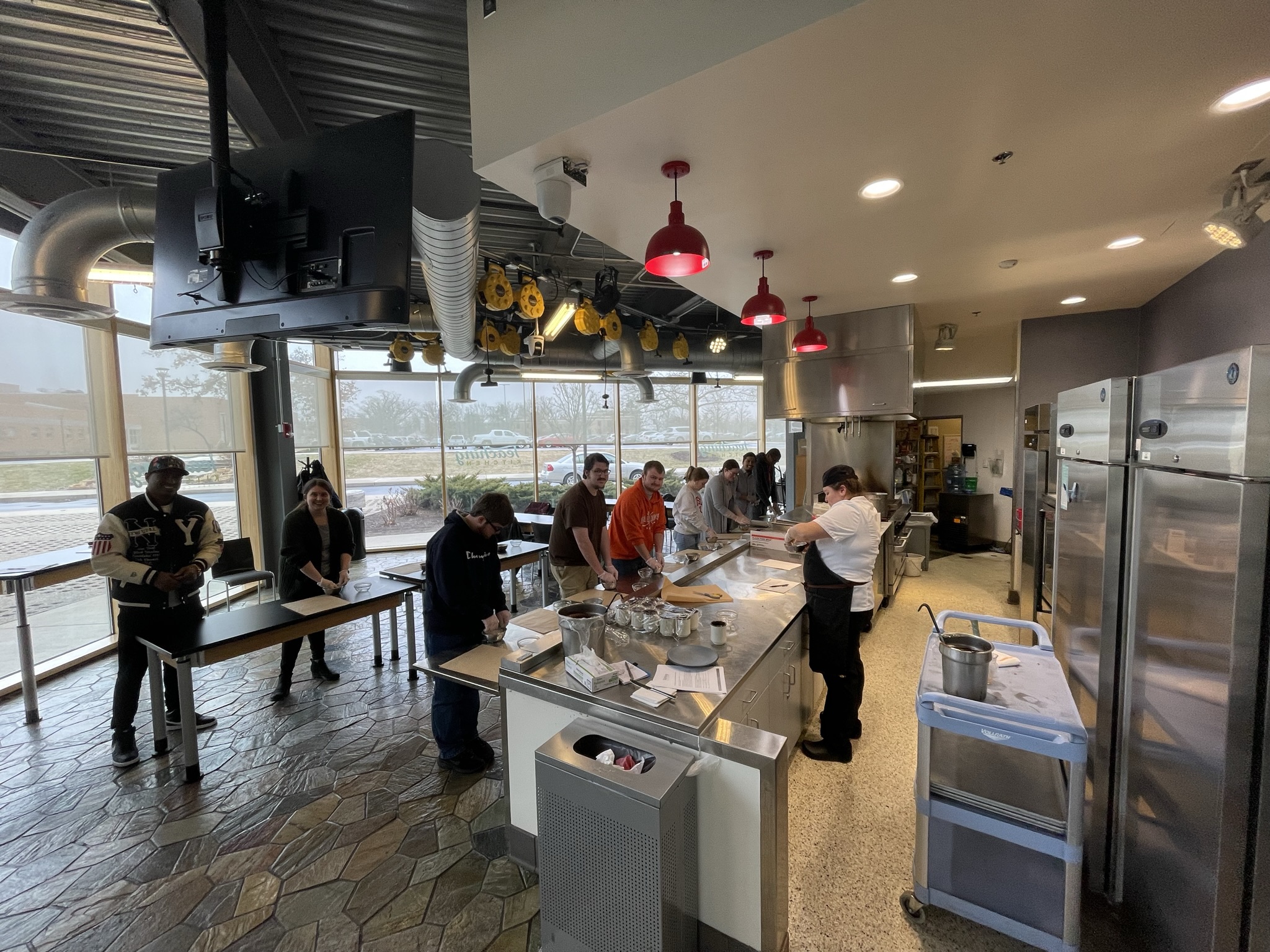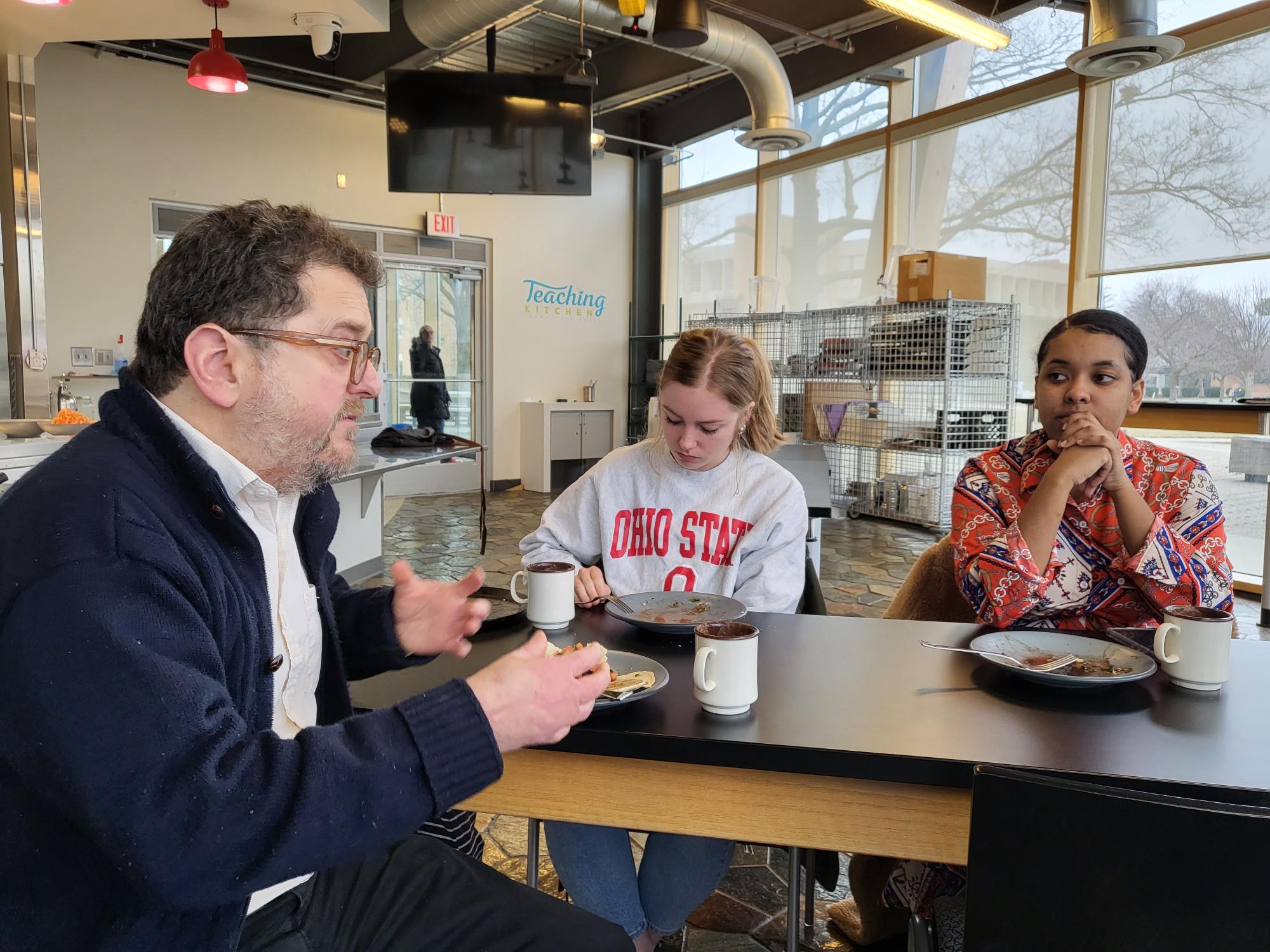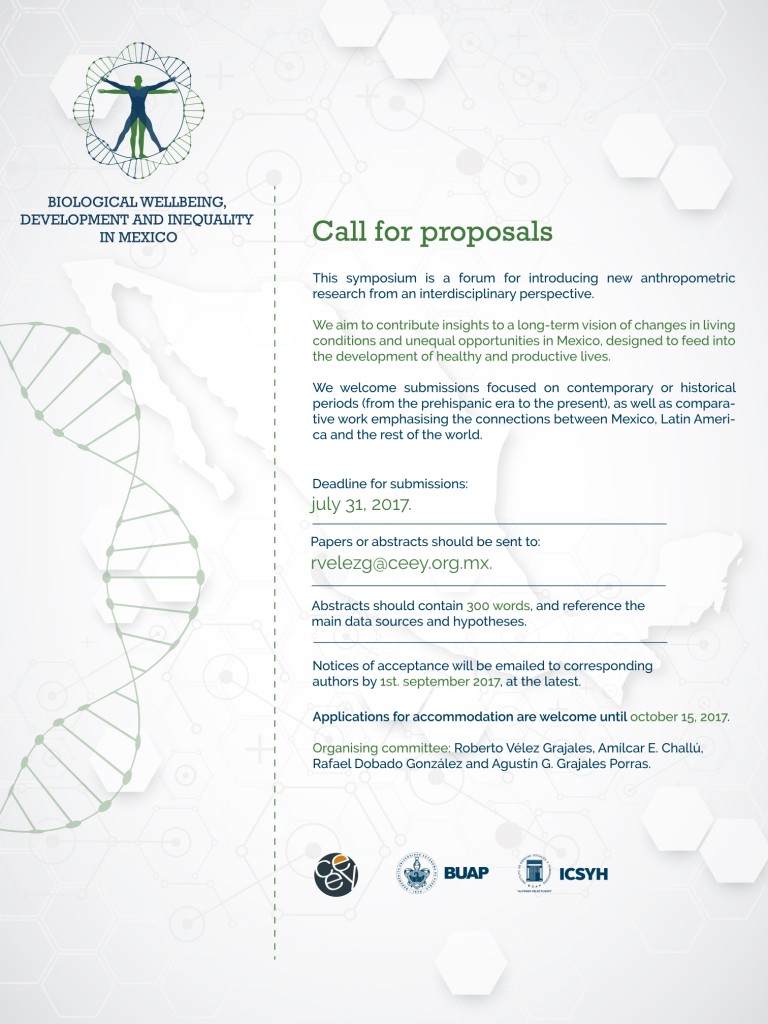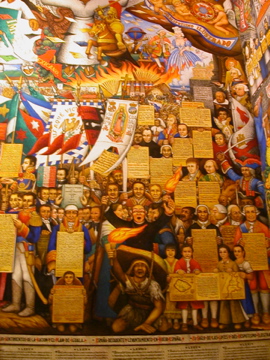(Postdata: Some have expressed concern about obtaining the materials. We’ll sort this out in the first week of classes to provide lower cost alternatives to buying the books. I also wanted to point out that this is a tentative arrangement of readings, the list may change in the final version. Don’t hesitate to send me an email with your preferences, concerns, etc.)
In Fall 2011 I’ll be teaching my graduate seminar on Latin America: HISTORY 6820: Problems in History: Latin America. This course is an introduction to the historiography of Latin America, colonial and modern. It is not intended as a survey class on the history of the region, but a discussion of selected issues and approaches.
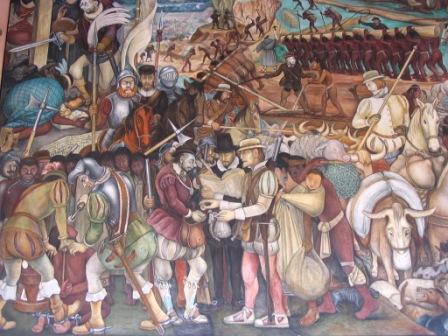
Mural by Diego Rivera
Given that this is the only graduate seminar on Latin American history in our regular offerings, I decided to keep it broad, from the colonial to the modern era, leaning more heavily on the latter. It includes topics that are very close to my research interests (late colonial Mexico, political economy, living standards and inequality), but hopefully has a bit for everyone and seeks to feature not only typical academic work but also novels and ethnography. At the end of each unit, students will write an essay. It is possible to substitute some readings with my authorization.
Introduction:
1- Chasteen, Born of Blood & Fire, 978-0393911541, Norton
Overview of the region’s history. Concept: hegemony.
Unit I: The Colonial and Postcolonial Reality
2- León Portilla, Visions of the Vanquished/Schwartz, Victors and Vanquished/Wachtel, Vision of the Vanquished (choose one)
3- Marichal, Bankruptcy of empire, 0521879647, Cambridge Univ. Pr.
4- Earle, The Return of the Native, 978-0822340843, DUP
The trauma of conquest, transformation of native society, how colonial society worked, how colonial and postcolonial constructions were constructed. Concepts: political economy, identity
Unit II: Peasants and Mobilization
5- Van Young, The Other Rebellion, 978-0804748216, SUP
6- Azuela, The Underdogs
7- Gotkowitz, A Revolution of Our Rights, 978-0822340676, DUP
The origins of rebellions; rebellion and revolution; peasant ideologies. Concepts: Peasant, Political culture.
Unit III: Inequalities of Wealth, Opportunities and Power
8- Kouri, A Pueblo Divided, 978-0804758482, SUP
9- Fisher, A Poverty of Rights, 978-0804752909, SUP
10- Selections from: Living Standards in Latin American History; Indelible Inequalities; Williamson, Five
11- Adler Hellman, Mexican Lives, 978-1565841789 The New Press
Social and historical foundations of inequality; human development as a multidimensional problem; inequality and trade; the problem of persistence. Concepts: categorical and relational inequality, capabilities, market economy, ethnography.
Unit IV: Poor People’s Politics
12- Plotkin, Mañana es San Perón, 978-0842050296, Scholarly Resources
13- Winn, Weavers of the Revolution, 978-0195045581, OUP
14- Auyero, Poor People’s Politics, 978-0822326212, DUP
Changing coalitions in the twentieth century; populism, socialism and neoliberalism; importance of labor, labor and state. Concepts: populism, clientelism, poor people’s politics
Epilogue: Latin American History as Magic Realism
15- García Márquez, A Hundred Years of Solitude
